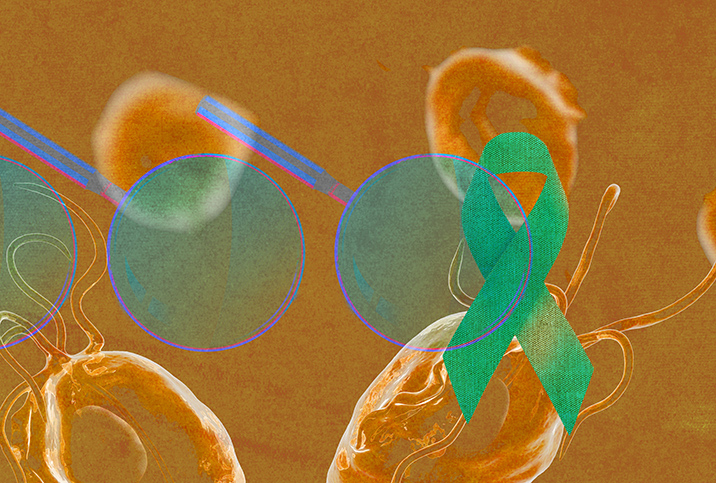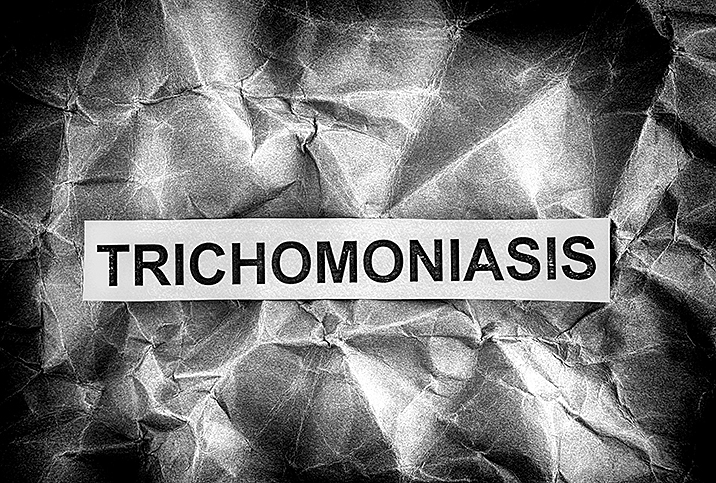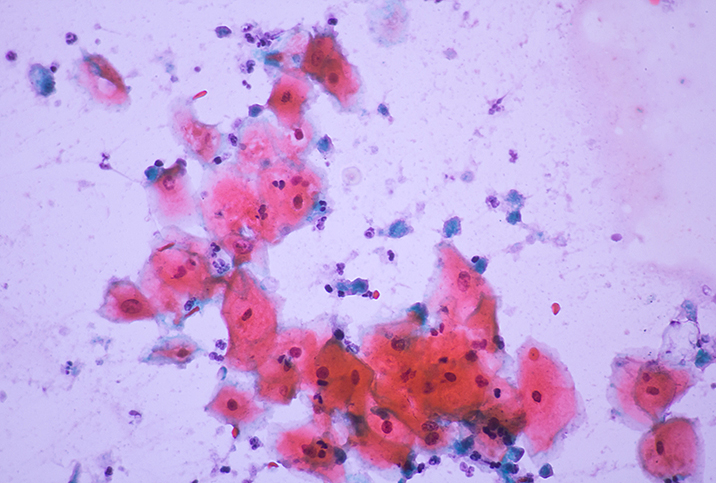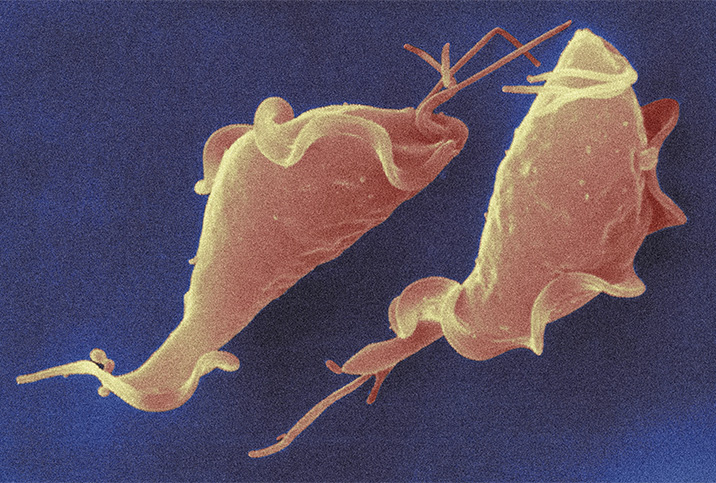Trichomoniasis in Men May Lead to Prostate Cancer or BPH

A common sexually transmitted infection (STI) could be causing an increase in genitourinary cancers in men, a 2022 study published in Scientific Reports suggests. An infection from a parasite called Trichomonas vaginalis may cause chronic inflammation, which in turn could contribute to an increased risk of both prostate cancer and benign prostatic hyperplasia (BPH), according to researchers.
The infection causes trichomoniasis, commonly known as "trich," which is one of the most widespread STIs in the world. More than 2 million people develop the infection every year in the United States alone. However, only 30 percent of infected individuals display symptoms, according to the Centers for Disease Control and Prevention (CDC), which leads to the infection often going untreated.
It's this chronic, untreated infection that researchers suspect may lead to an increased risk of cancer and other prostate complications.
What is trichomoniasis?
Trichomonas vaginalis is a type of protozoan parasite that can affect all people's genital tracts. In general, trich is more common in females and found anywhere on the lower genital area, from the vulva to inside the vagina, cervix and urethra.
"The organism is Trichomonas vaginalis, which is a unicellular parasite referred to as a protist," explained Daniel Furlong, M.D., M.B.A., a urologist at Oregon Health & Science University in Portland. "It mostly infects the lining of the urogenital tract, including the vagina, urethra and paraurethral glands. Other less common sites include the cervix, bladder and Bartholin glands in women and the prostate in men. It has also been found in the mouth and rectum."
The infection can spread from a female's genitals to a male's, or from male to male. In males, the parasite most often resides inside the urethra. Robert Caruso, M.D., a urologist at Clara Maass Medical Center and Jersey City Medical Center in New Jersey, explained that while Trichomonas vaginalis is not bacteria, it functions in a bacteria-like way and causes illness.
Anyone having unprotected sex can spread the infection. Trichomoniasis symptoms include:
- Itching, burning and irritation in and around the genitals
- A burning sensation after urination or ejaculation
- Discomfort with urination
- Discharge from the penis or vagina
- A foul-smelling discharge from the vagina
While the symptoms of trich are noticeable and unpleasant, a majority of people who are infected with trich—about 70 percent—do not develop symptoms at all. However, even people without symptoms can spread trich. And, unfortunately, once someone is infected, the parasites can last for years without trichomoniasis treatment.
The CDC notes that untreated trich infections are primarily related to long-term complications such as reinfections, HIV and genital inflammation, as well as premature labor in pregnant people and low birth weight for the baby.
But now, as the Scientific Reports study explains, doctors are examining a potential link between prostate cancer and long-term, untreated trich.
The link between trich and prostate health
While a direct link between prostate health and trich has never been formally established, the 2022 Scientific Reports study hypothesized that it is plausible trich could increase the risk of cancer because it causes inflammation in the genital area, and urinary tract infections (UTIs) are also linked to genitourinary cancers. Since a majority of trich infections go undetected and untreated, many people with the infection have long-term inflammation.
The study was conducted in Taiwan and looked at a total of 62,544 males in the case group, compared to 187,632 in the control group, from 2000 to 2015. The results found men infected with trichomoniasis had a "significantly higher risk" of developing both benign prostatic hyperplasia (BPH) and prostate cancer than males never infected with trich.
So what's the connection? The study's researchers explained that the parasitic infection produces a type of chronic inflammation called interleukin-6 (IL-6), which has been identified in people with advanced prostate cancer. Additionally, IL-6 has been found in other cancers, including breast cancer.
Furlong noted that previous studies looked into the connection between trichomoniasis and its effect on the prostate. Those studies have been difficult to replicate and have not officially proved a link.
He added that the Scientific Reports study in particular may have underestimated the number of men previously infected with trich.
"As we know, there is a large portion of males who are asymptomatic from TV and, therefore, are missing from this study," he said. "Are we just picking up more prostate cancer in these symptomatic individuals because they are the ones being screened? I think the jury is still out."
What is known, Furlong added, is a clear association between trich and inflammation of the prostate, which leads to prostatitis, a condition marked by swelling and inflammation in the prostate gland.
"Whether prostatitis from trich then goes on to increase the risk of prostate cancer, or propagate the progression of already existent prostate cancer, is yet to be determined," he said.
How to lower your risk of trichomoniasis
The best way to lower your risk of STI complications—potentially including BPH or prostate cancer—is to get screened for infection. Caruso and Furlong both advised that the frequency with which you should be tested for STIs and sexually transmitted diseases (STDs) depends on your sexual activity and risk exposure.
Males who are asymptomatic and in a monogamous relationship may not need regular testing. But males with multiple sexual partners should be tested on a regular basis, or even with every new potential exposure.
"In general, males should be screened if they present with clinical symptoms of STI, are seeking STI evaluation, have a history of incarceration, have partaken in commercial sex work, have a history of STI or have sex with other men," Furlong said.
Men who are having sex with other men should also undergo screening once a year or more, depending on their behaviors, he added.
All men should also see a doctor for any new or worsening urinary symptoms, including frequency, urgency, straining, hesitancy, intermittency, burning, perineal or pelvic pain, decreased force of stream and blood in the urine.
Trich is fairly simple to treat, Caruso said. Testing can be inaccurate sometimes, but if trich is suspected, a doctor can treat it empirically through a trial of metronidazole.
Other potential complications of a trich infection
Even if you don't wind up with cancer or an enlarged prostate, other serious complications can arise from undetected STIs. Furlong explained that trichomoniasis has been associated with an increased risk of HIV infection and transmission, as well as an increased risk of infection of other STIs, such as genital herpes, chlamydia, gonorrhea and HPV.
"Given that we know that a large subset of these STIs can be asymptomatic, men need to understand that passing them along to their partner can have very different outcomes," he stressed.
Specifically, females infected by a male partner could end up with pelvic inflammatory disease (PID) and subsequent infertility. Contracting trich while pregnant can lead to poor obstetric outcomes, including premature rupture of the membranes, preterm delivery and low birth weight. Newborns can become infected during delivery. When they do, they present with a host of symptoms, including fever and respiratory, nasal and urinary symptoms.
Sexual partners should be aware of their risk and speak up if they suspect a problem, too, Caruso said.
"Although it can be a delicate subject, people should be willing to discuss potential symptoms with their partners," he said. "For example, if an odor or discharge is present, someone may not notice this about themselves, but their sexual partner may notice it and should speak up for their own health and safety and that of their partner."


















